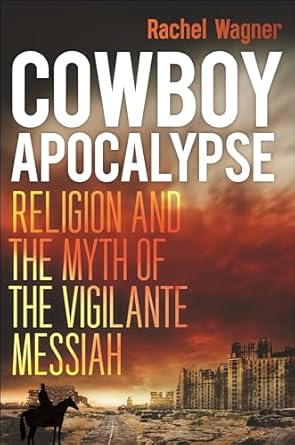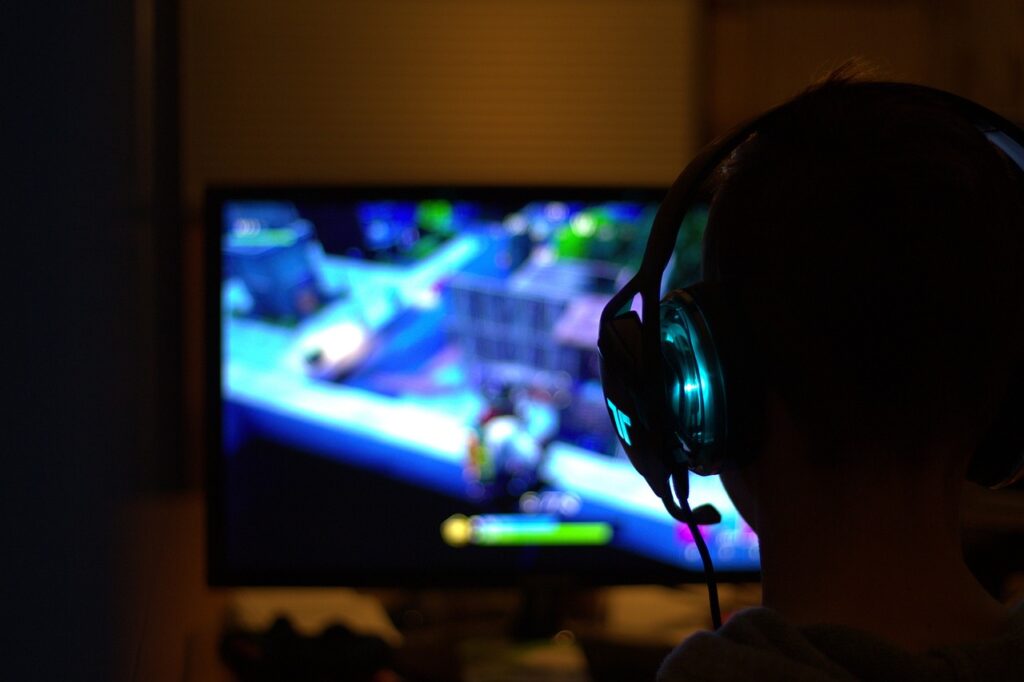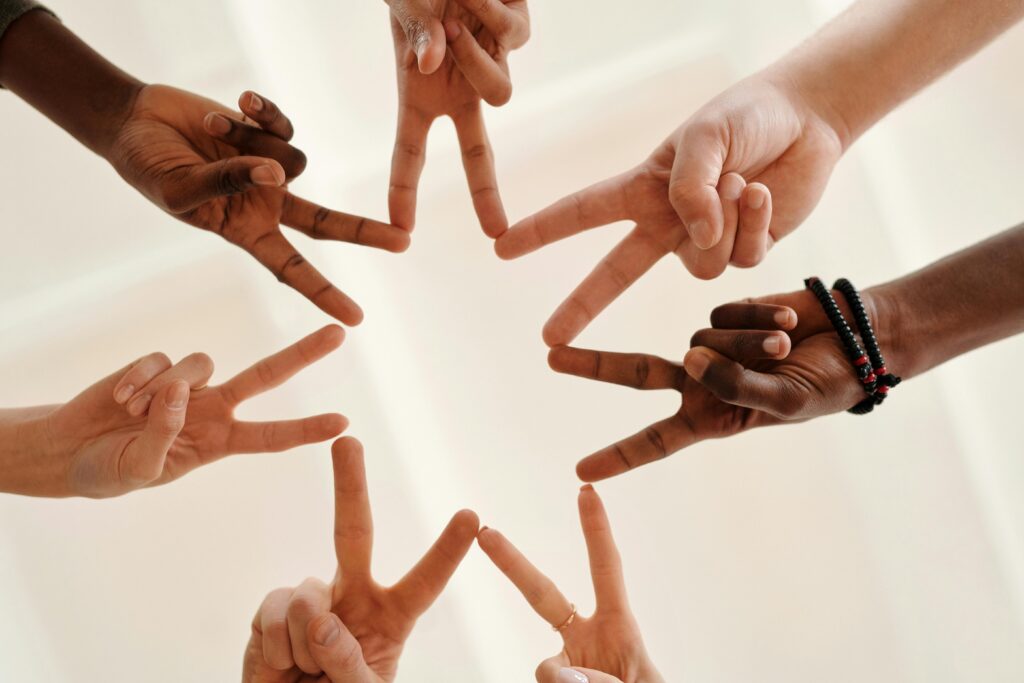
Cowboy Apocalypse: Religion and the Myth of the Vigilante Messiah, a new release by Rachel Wagner from NYU Press, charts the myth of the “good guy with a gun,” connecting America’s frontier beginnings with visions of the end of the world.
In the midst of widespread mass shootings in America, a common motif stands out: the perpetrators of these attacks often view themselves as vigilante saviors, whose job it is to regulate society in a way that exterminates their enemies.
In this fascinating critique, Rachel Wagner makes the case that this unfortunate phenomenon is best understood through the idea of the cowboy apocalypse. She shows that across much US media, from video games and blockbuster movies to novels and TV, a story arc has been created that provides a complete myth about the end of the world and the future after that. In these stories, the cowboy messiah is envisioned as a good guy with a gun. But he doesn’t save the world. He just saves his world: he protects his family and others he deems worthy while embracing the chance to wipe the global slate clean and start fresh, with survivors testing their mettle on a new frontier.
 Wagner illuminates the links between Christian apocalypticism, American gun culture, and the romanticization of the white male-dominated American frontier, showing how the vigilante has come to be regarded as a new savior figure, out to protect the world for white supremacy and patriarchy. She also offers ways to respond with other powerful cultural myths, making use of media to tell other stories. Cowboy Apocalypse offers a new means of making sense of how guns profoundly shape American life, and how we might engage with them otherwise.
Wagner illuminates the links between Christian apocalypticism, American gun culture, and the romanticization of the white male-dominated American frontier, showing how the vigilante has come to be regarded as a new savior figure, out to protect the world for white supremacy and patriarchy. She also offers ways to respond with other powerful cultural myths, making use of media to tell other stories. Cowboy Apocalypse offers a new means of making sense of how guns profoundly shape American life, and how we might engage with them otherwise.
Rachel Wagner is Professor of Religious Studies and Chair of the Department of Philosophy and Religion at Ithaca College. She is the author of Godwired: Religion, Ritual and Virtual Reality.
To celebrate the recent release of Cowboy Apocalypse, I am pleased to share this Q&A with the author.
What inspired your passion to write about this topic?
Rachel Wagner: In my first book, Godwired (Routledge, 2012), one of the things I looked at was video game violence and how it could be considered with a ritual lens. What kind of ritual requires virtual violence, though? That question stuck with me, and I began further research on how games work like apocalyptic rituals. That is, they work like enacted narratives of violence. To play a first-person shooter video game is to take an imaginary otherworldly journey, in which one enacts symbolic violence against one’s enemies while acting as a savior figure. Guns become part of a vision of world salvation. Once I began to see how widely this salvific story was told in all kinds of media—not just videogames—I was able to see, too, that the story leaned hard on the American frontier as a contextualizing trope. And the book was born.
What was your approach to and experience with research for this book?
 RW: This is an interesting question, because I started with a question, something like, “What the heck is going on with apocalyptic video game violence?” I always begin my research with a question of that sort, use my training in religious studies and media studies, and see where the question leads. I believe that studying culture is studying ourselves. So when I say I wanted to understand apocalyptic video game violence, I mean also that I want to understand apocalyptic violence in our world today. I read the things I needed to read to understand the question, and each insight led to another eddy of approaches. So when I realized I couldn’t just talk about what it meant to shoot a gun ritually, for example, but I also needed to talk about being shot with a gun, I found myself reading trauma studies and also looked at dark tourism (a subset of hospitality studies) to understand how real guns become objects of devotion. The whole book was like that, inviting me into niches of other fields of study in order to understand what is going on with video game violence, and how that can help us understand apocalyptic violence writ large in America today.
RW: This is an interesting question, because I started with a question, something like, “What the heck is going on with apocalyptic video game violence?” I always begin my research with a question of that sort, use my training in religious studies and media studies, and see where the question leads. I believe that studying culture is studying ourselves. So when I say I wanted to understand apocalyptic video game violence, I mean also that I want to understand apocalyptic violence in our world today. I read the things I needed to read to understand the question, and each insight led to another eddy of approaches. So when I realized I couldn’t just talk about what it meant to shoot a gun ritually, for example, but I also needed to talk about being shot with a gun, I found myself reading trauma studies and also looked at dark tourism (a subset of hospitality studies) to understand how real guns become objects of devotion. The whole book was like that, inviting me into niches of other fields of study in order to understand what is going on with video game violence, and how that can help us understand apocalyptic violence writ large in America today.
While writing this book, what would you say was the biggest challenge you overcame?
RW: It was hard to keep the book under control. It is so interdisciplinary and so expansive that I had to keep myself focused on the American context, and I had to resist the urge to cover every little nook that opened up. There’s history and religion and media and ritual studies here. There’s trauma studies and apocalypticism and biblical studies and queer theory and critical race theory and studies of narrative and gaming and role-play, and there’s a whole swath of studies about gun ownership that I looked at. Trying to keep the thread intact that is woven throughout was hard, but necessary for readers to see that through-line. Jill’s editing helped me with that a lot.
In the book, you write about how various forms of media add to the pervasiveness of violence and gun culture in America. In your opinion, what is something people can do to contribute to change in this area?
 RW: I’m not a policy wonk, so I can’t say exactly what we can do in terms of laws. However, I am interested in culture and how it can be changed and shaped. This book is about awareness and ownership of imagination. I do believe we are being lied to when we are told that those of us who don’t own guns can have no opinion about their place in American society, that we should be denied our voice. Anyone can be shot, so the prevalence of guns in American culture is everybody’s business, and everybody should get to have an opinion about the laws and policies we enact. What’s more, the fascination with guns can take a ritual and quasi-religious form, which this book exposes. I hope that knowing how prevalent the story of redemptive gun violence is in our media writ large will give people a means to say no to gun culture. Guns are props in a cultural story of the end of things. We are fascinated with destruction right now, and we do not have to be. So I hope people who own guns understand that gun control laws will not harm those who use guns for hunting or home protection. Gun control laws are meant to slow down guns being used impulsively, by people who see themselves as Rambo or who think society is set to collapse around them. If we give up the narrative of social collapse, and work on building things together instead, maybe we will be less fixated on having guns to protect ourselves in case of collapse.
RW: I’m not a policy wonk, so I can’t say exactly what we can do in terms of laws. However, I am interested in culture and how it can be changed and shaped. This book is about awareness and ownership of imagination. I do believe we are being lied to when we are told that those of us who don’t own guns can have no opinion about their place in American society, that we should be denied our voice. Anyone can be shot, so the prevalence of guns in American culture is everybody’s business, and everybody should get to have an opinion about the laws and policies we enact. What’s more, the fascination with guns can take a ritual and quasi-religious form, which this book exposes. I hope that knowing how prevalent the story of redemptive gun violence is in our media writ large will give people a means to say no to gun culture. Guns are props in a cultural story of the end of things. We are fascinated with destruction right now, and we do not have to be. So I hope people who own guns understand that gun control laws will not harm those who use guns for hunting or home protection. Gun control laws are meant to slow down guns being used impulsively, by people who see themselves as Rambo or who think society is set to collapse around them. If we give up the narrative of social collapse, and work on building things together instead, maybe we will be less fixated on having guns to protect ourselves in case of collapse.
What do you hope readers take away from Cowboy Apocalypse?
RW: I hope people are surprised, and a little mortified, at how often we replay this narrative of violent redemption. Christianity makes room for this, at its worst, when it celebrates the Christ of Revelation that comes with a flaming sword in his mouth to judge the wicked. This idea of good versus evil is deeply damaging, and it is not the only way of being Christian, of course. But it is a way that is embraced by leaders in high places who—in my opinion—are less Christian than patently apocalyptic and self-aggrandizing. When guns become ritual tools used to demonstrate one’s superiority, they can support white supremacy, patriarchy, the excesses of capitalism, and the horrors of war on a daily basis. This is why we have so many mass shootings—because we celebrate shooting as the ritualization of power in America. We have such better options we could choose.
Get your copy of Cowboy Apocalypse here.
